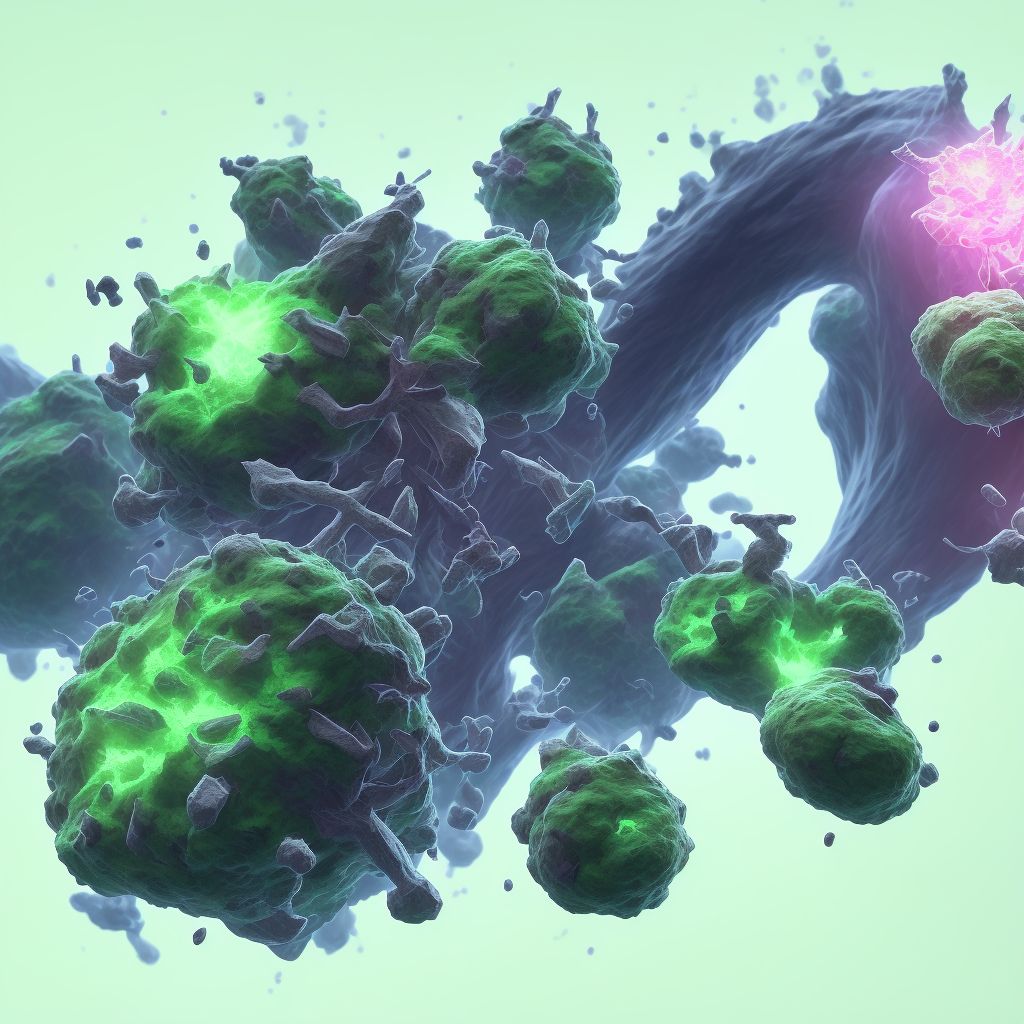
Nondisplaced fracture of medial condyle of unspecified tibia, subsequent encounter for open fracture type I or II with nonunion Save
ICD-10 code: S82.136M
Disease category: S82.136: Nondisplaced fracture of medial condyle of unspecified tibia
Nondisplaced Fracture of Medial Condyle of Unspecified Tibia: Understanding Open Fracture Type I or II with Nonunion
A nondisplaced fracture of the medial condyle of the unspecified tibia refers to a bone break in the inner side of the lower leg, specifically affecting the rounded protrusion known as the medial condyle. This type of fracture may occur due to trauma or excessive stress on the tibia, leading to a subsequent encounter for open fracture type I or II with nonunion.
Open fractures are classified based on the severity of the injury and the degree to which the bone breaks through the skin. Type I and II open fractures involve minimal or moderate damage to the surrounding soft tissues and are often treatable without surgical intervention.
- Nondisplaced fracture: In this case, the bone fragments remain aligned and in their original position.
- Medial condyle of the unspecified tibia: The fracture specifically affects the rounded prominence on the inner side of the lower leg bone, known as the medial condyle.
- Subsequent encounter: This term indicates that the patient is receiving medical attention for a recurring issue related to the initial fracture.
- Open fracture: An open fracture involves a break that penetrates the skin, increasing the risk of infection and other complications.
- Type I or II: Type I open fractures have minimal soft tissue damage, while type II fractures involve moderate damage. Both types are less severe than higher classifications.
- Nonunion: Nonunion refers to the failure of the fracture to heal within the expected timeframe, leading to persistent symptoms and potential complications.
While this article does not cover treatment options for this condition, it is important to seek medical advice from a healthcare professional. Proper diagnosis and treatment are crucial for managing the fracture, reducing pain, and promoting healing.
Remember, each case is unique, and treatment decisions should be made in consultation with a qualified healthcare provider. They will consider various factors such as the patient's overall health, the severity of the fracture, and individual circumstances to determine the most appropriate course of action.
Treatment of Nondisplaced fracture of medial condyle of unspecified tibia, subsequent encounter for open fracture type I or II with nonunion:
Treatment Options for Nondisplaced Fracture of Medial Condyle of Unspecified Tibia, Subsequent Encounter for Open Fracture Type I or II with Nonunion
A nondisplaced fracture of the medial condyle of the tibia is a specific type of injury that can result in serious complications if not properly treated. When the fracture is open and classified as type I or II, with subsequent nonuni...
To see full information about treatment please Sign up or Log in